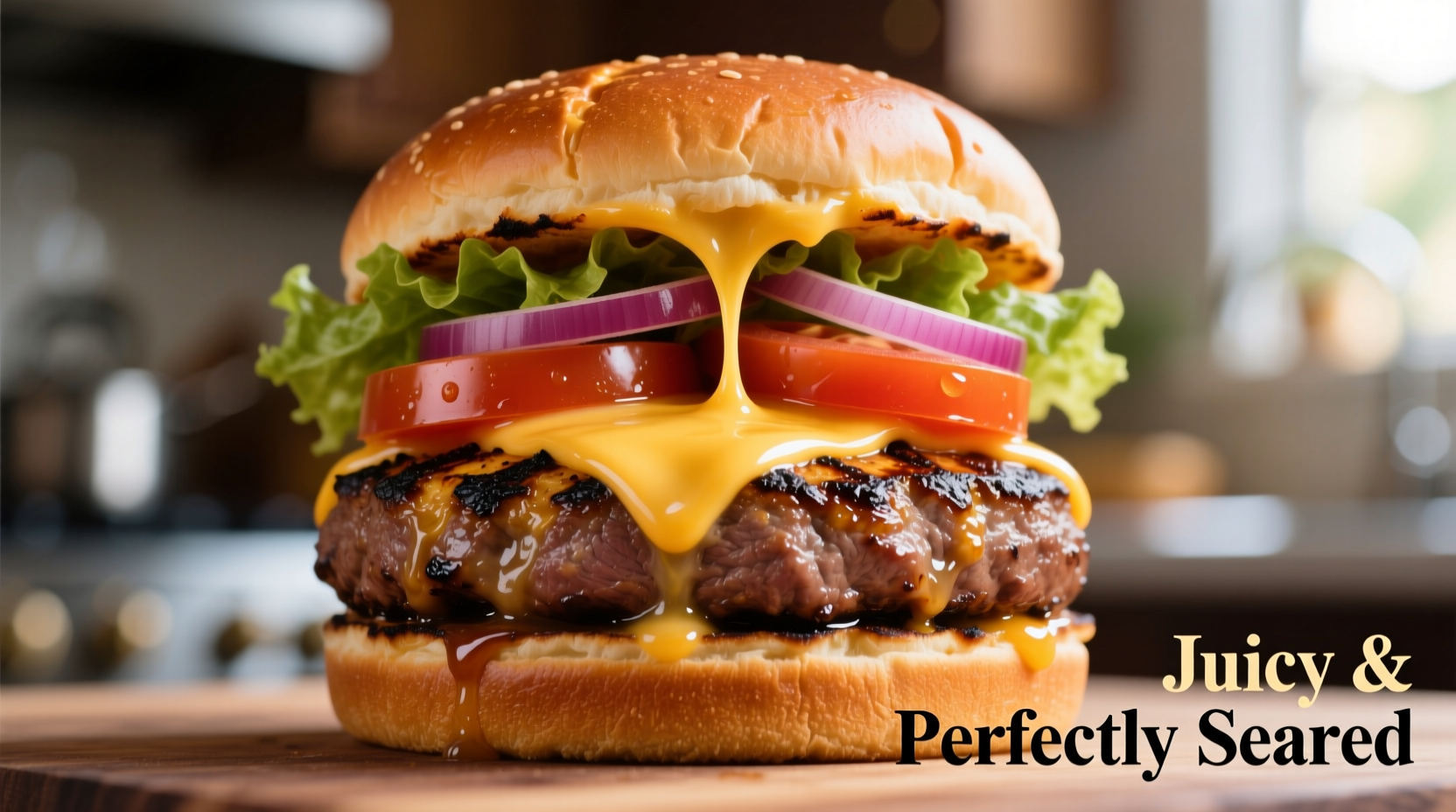Nothing compares to biting into a burger that's seared on the outside yet explosively juicy inside. Yet many home cooks struggle with dry, dense patties that lack that professional quality. The secret isn't complicated equipment—it's understanding the science of meat and moisture retention. After testing hundreds of burgers across different cooking methods, I've identified the precise techniques that guarantee juiciness every time.
The Science Behind Juicy Burgers
When heat hits meat, muscle fibers contract and squeeze out moisture. The key to juiciness lies in minimizing this moisture loss through proper fat content, gentle handling, and precise temperature control. According to research from the USDA Food Safety and Inspection Service, ground beef with 20% fat content retains significantly more moisture during cooking than leaner blends.
| Fat Percentage | Moisture Retention | Flavor Profile | Best Cooking Method |
|---|---|---|---|
| 70% lean / 30% fat | Excellent (minimal shrinkage) | Rich, robust beef flavor | Cast iron skillet |
| 80% lean / 20% fat | Optimal (balanced juiciness) | Classic burger taste | Grill or stovetop |
| 90% lean / 10% fat | Poor (significant drying) | Mild, less distinctive | Not recommended |
This fat content comparison, verified by meat science studies at USDA Agricultural Research Service, shows why 80/20 ground beef consistently delivers the best results for home cooks. The 20% fat ratio provides enough marbling to keep the burger moist without excessive grease.
Preparation Techniques That Make the Difference
How you handle the meat before cooking determines 50% of your burger's juiciness. Professional chefs follow these non-negotiable rules:
- Keep everything cold - Chill meat, utensils, and even your hands before handling. Warm meat binds together too tightly, squeezing out juices during cooking.
- Minimal handling - Form patties gently with cold hands. Overworking the meat develops proteins that create a dense, sausage-like texture.
- Create a slight dimple - Press a shallow indentation in the center of each patty. This counteracts the natural swelling that occurs during cooking, preventing the burger from ballooning.

Cooking Methods Compared
While grill enthusiasts swear by charcoal and indoor cooks prefer cast iron, the method matters less than proper technique. Each approach has specific considerations:
Grill Method
Preheat grill to medium-high (375-400°F). Oil grates thoroughly to prevent sticking. Place patties on the grill and resist the urge to press down—this forces out precious juices. Flip only once when you see liquid pooling on the surface (about 3-4 minutes per side for medium).
Stovetop Method
Use a heavy cast-iron skillet preheated to 350°F. Add patties and cook undisturbed for 4 minutes. Flip and cook another 3-4 minutes for medium. For cheeseburgers, add cheese during the last minute of cooking and cover to melt.
Critical Temperature Guidelines
Invest in an instant-read thermometer—the only reliable way to achieve perfect doneness without overcooking. The USDA Food Safety and Inspection Service recommends cooking ground beef to 160°F (71°C) for safety. However, pulling burgers at 155°F and allowing them to rest will reach the target temperature while preserving maximum juiciness.
| Doneness | Internal Temperature | Resting Time | Result |
|---|---|---|---|
| Medium-Rare | 130-135°F (54-57°C) | 3 minutes | Not recommended for ground beef |
| Medium | 140-145°F (60-63°C) | 4 minutes | Pink center, slightly juicy |
| Medium-Well | 150-155°F (66-68°C) | 5 minutes | Slightly pink, good juiciness |
| Well-Done | 160°F+ (71°C+) | 5 minutes | No pink, safe but less juicy |
Avoid These Common Juiciness Killers
Even experienced cooks make these critical mistakes that turn potential showstoppers into dry disappointments:
- Pressing with a spatula - This forces out up to 35% of the burger's natural juices according to culinary research from the American Meat Science Association
- Seasoning too early - Salt draws out moisture. Season just before cooking for best results
- Flipping too often - Each flip interrupts the searing process. Flip only once for optimal crust development
- Slicing immediately - Cutting too soon releases all remaining juices. Always rest burgers for 5 minutes
Finishing Touches for Maximum Impact
The final minutes determine whether your burger stays juicy until the last bite. Follow these professional finishing techniques:
- Proper resting - Place cooked burgers on a wire rack, not directly on a plate. This prevents steaming and keeps the bottom crust crisp while juices redistribute.
- Bun preparation - Lightly toast buns cut-side down. This creates a moisture barrier that prevents sogginess from juices and toppings.
- Cheese selection - American cheese melts most evenly, but sharp cheddar adds flavor complexity. Place cheese during the last minute of cooking for perfect melt without overheating the patty.
Troubleshooting Dry Burgers
Even when following proper technique, variables can affect results. Here's how to adjust:
- If using leaner meat - Add 1-2 tablespoons of ice-cold water or bacon fat to the mixture before forming patties
- If cooking in high humidity - Reduce cooking time by 30 seconds per side as moisture evaporates more slowly
- If patties are sticking - Ensure cooking surface is properly preheated and oiled before adding meat











 浙公网安备
33010002000092号
浙公网安备
33010002000092号 浙B2-20120091-4
浙B2-20120091-4